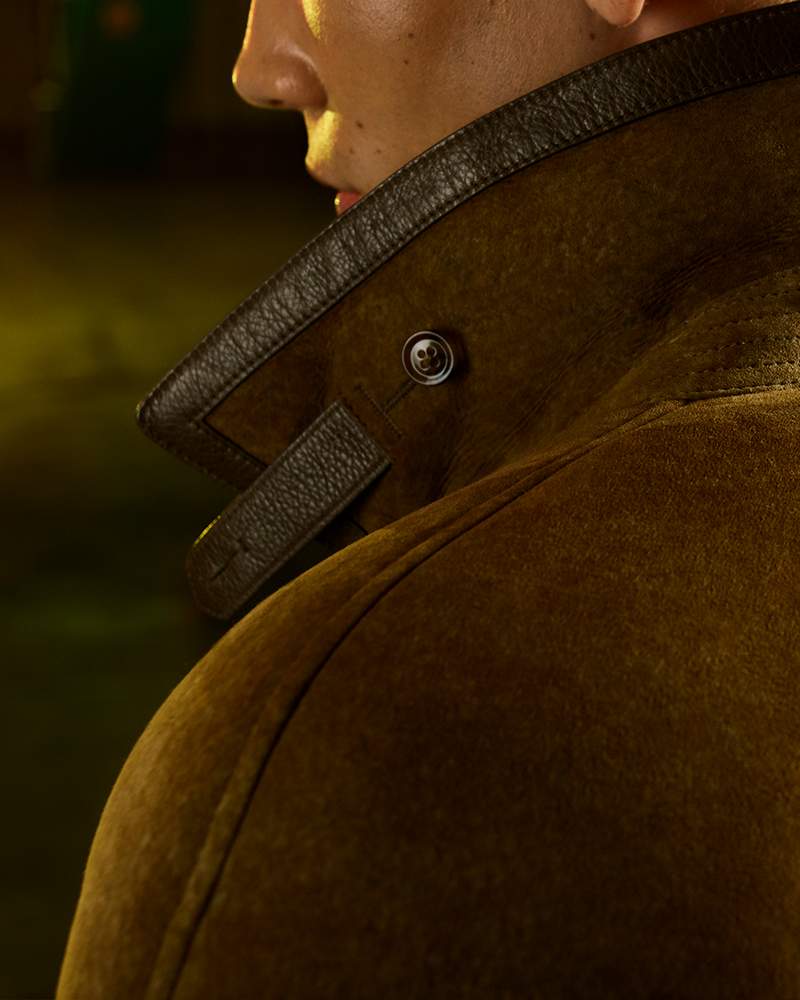THE JOURNAL

When we got a sneak preview of TOM FORD’s latest capsule collection, now available exclusively on MR PORTER, we were struck by just how perfectly Tom Ford it is, in all the right ways. The opulent fabrics, the sharp tailoring, the immaculate outerwear and accessories. The fit, the look, the feel? TOM FORD, TOM FORD, TOM FORD.
Frankly, we’re not sure that we could find any better way to describe the collection than this. Why? Because TOM FORD is so much more than just a brand name. Those two crisp, clipped words have transcended fashion and passed into the general lexicon as a byword for a certain kind of lifestyle: sensual and sophisticated; luxurious without being ostentatious; born in the US, but with an international world view.


And because this latest collection so neatly encapsulates all of those qualities, it got us thinking about the TOM FORD brand and its meteoric rise to the pinnacle of the fashion industry, which is surely one of the greatest success stories of the 20th century.
If that sounds like hyperbole, consider this: TOM FORD is one of only a handful of brand monikers from the fashion world, along with Gucci and Versace, that can be used as both a proper noun and an adjective. It’s no coincidence that these three designers also share the distinction of having had a major hip-hop track named after them: “Gucci Gang” by Lil Pump, “Versace” by Migos and “Tom Ford” by Jay-Z. In an interview with WWD, Mr Tom Ford described Jay-Z’s track as “kind of a validation of one’s work, as it means that one has really penetrated and made an impact on popular culture”.

But what singles TOM FORD out among its peers is just how quickly it achieved legend status. While Gucci and Versace were founded in 1921 and 1978 respectively, TOM FORD is comparatively the new kid on the block. Founded as a cosmetics and fragrance line in 2005, it branched out into menswear the following year and only released its first womenswear collection in 2010. Jay-Z’s tribute to the brand was released in 2013 – the same year that TOM FORD began to invite fashion industry press into its seasonal presentations, having previously held them behind closed doors for a select group of private clients. That’s seven years to stardom.
You might ask how on earth this happened. How did a discreet start-up with no existing retail network, no core products and a business model more closely resembling that of a couture house than a modern fashion business, become one of the world’s most recognised labels in the space of less than a decade? The answer, of course, lies with Mr Ford himself. Now 58 and no newcomer to the world of luxury, the Texas-born designer founded his eponymous label after a decade-long stint as the creative director of one of the biggest brands in the world: none other than Gucci.


Now known for its exaggerated, colourful eclecticism, traits instilled by the current creative director Mr Alessandro Michele, Gucci was a very different kind of fashion label under Mr Ford. Sleek, sexy and glamorous, it was as famous for its provocative, often controversial ad campaigns as its iconic horsebit loafers. When Gucci acquired Yves Saint Laurent in 1999, he was named its creative director, too – further burnishing his credentials as the superstar designer of the late 1990s and early 2000s, some achievement when his contemporaries included Messrs Alexander McQueen and John Galliano.
When Mr Ford left his post at the Gucci Group (now known as Kering) in 2003, he took time off to produce a book cataloguing his time at Gucci, which was published by Rizzoli and entitled simply TOM FORD. He also set up a film production company, Fade To Black, which would eventually serve as a platform for his directorial debut, 2009’s A Single Man. But his absence from the fashion industry was to prove fleeting, and he was back in the business before long – using the connections he made during his time at Gucci, his innate understanding of how to build a global brand and his stellar reputation to lay the foundations for success. That, of course, and his name.

From the start, there was something monumental about the words TOM FORD on a tag: their cadence, their geometry, their sheer overwhelming Americanness. It’s a name that could belong to a truck driver, an A-list movie star or the US President. There are few names that look so at home etched on a glass perfume bottle, sewn into the lining of a suit or gold-stamped onto the tongue of a sneaker as TOM FORD.
Speaking of suits: “Menswear is a detail-driven business,” said Mr Ford in a 2013 interview with The Business Of Fashion, explaining why he chose to launch his brand with menswear rather than womenswear. “It really is about the fabrics, or the make, or the buttonholes, or the lapels.” It’s a quote that could easily be the tagline of his latest collection. Imagined as a complete, day-to-night capsule wardrobe of 29 pieces, it’s defined not only by its bolder statements – copper-coloured zebra-print tuxedo, anyone? – but by the tiny details packed into every garment.

See, for instance, the hand-stitched leather undercollar and throat latch of a houndstooth sports jacket, which converts the lapel into a collar; or the patch pockets on a suede jacket, which are made from a slightly darker shade of suede for a subtle tonal effect. And then there are the many hallmarks of the brand, from the Savile Row-style ticket pockets on tailoring to the oversized TF-branded zippers, which make an appearance on everything from accessories to outerwear.
All in all, then, it’s very, well, TOM FORD. See what we mean?
